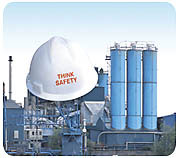
Building a safety culture in your organization does not happen overnight. At the root of a safety culture is behavior, and changing human behavior requires education. Changes occur on two levels: getting the individual to stop doing some things and getting the individual to start doing other things.
Some people are resistant to change because it is unknown. People do what they do because that’s what they know how to do, and because it has worked for them in the past. Thus, for people to stop what they are doing, their current behavior patterns must first be disconfirmed. They must conclude that their current behavior no longer serves them well. Positive associations with new behavior must be formed, and we form new behavior traits through education.
Promote learning
Creating a culture that promotes learning is pivotal in developing a culture of safety. Learning plays an important role in creating a positive environment. Organizations that promote learning indirectly promote employee morale; employees view themselves as more valuable to the organization when they see the organization investing in them.Educate employees on safety hazards in their working environment and use training programs that teach “how to†rather than “what not to do.†Workers must comprehend the value of the training they receive. Provide positive reinforcement and incentives for training. Help employees understand that training is not just a company requirement; it is for their well-being. Learning best safety practices and hazards awareness is laying the groundwork for a safety culture.
Promote safety within your organization. Communicate with every level of the organization the importance of safety for employee well-being and the organization. Posting safety signs and handing out employee handbooks are both credible ways to create safety awareness throughout your organization. Utilize whatever means you have available to communicate with your team and management. Keep messages consistent and appealing. Constant reminders of both safe behavior and safety hazards will keep safety at the forefront of peoples’ minds.
Recognition
Recognize when positive safety choices are made, and make corrections when negative safety choices are made. Many organizations today are using recognition/rewards systems to promote safe behavior. This is a great way to promote safety as long as the foundation has been laid with training and education. When you see an employee working safe, recognize them and set an encouraging example for the rest of the team. On the other hand, when unsafe actions occur, determine what is causing the unsafe behavior and take corrective action to ensure it doesn’t happen again.Use accident and incident investigation techniques to determine the root cause of the accident, injury or unsafe behavior to train the employee(s) to correct their action. Rather than punishing an employee, help them to understand what they are doing wrong and how to correct the unsafe behavior.

Accountability
In order for a safety culture to persist, everyone in your organization should be accountable for safety, including you. Set goals and document successes. If one fails to meet a goal, use corrective action and positive reinforcement to correct behavior and encourage safety. When goals are met, reward the group. Assess your progress regularly and adjust the plan, communication strategy or training program if need be. Many organizations are adapting responsibility programs to use resources efficiently, such as lean manufacturing and Six Sigma, and holding the organization accountable for productivity and product quality. The same is true for safety — if a person is to be responsible for safety then one must also be held accountable for his or her actions.Promote openness and communication about safety in your organization. Solicit feedback and involve every level of the organization in your safety goals. Safety committees should consist of individuals from various levels and departments within your organization. Trust is very important in this process. Employees must feel as though they can express thoughts and report accidents or incidents without fear of blame or punishment. A true safety culture promotes the positive and looks to change or fix the negative behavior.
Strong leadership
There are many aspects of human behavior that need to be altered in order to achieve a successful culture change. Developing a culture of safety at your organization takes careful planning and maintenance, and most importantly strong leadership. Management and employees must change their attitudes and incorporate safety into everything they do.Developing and maintaining a safety culture is an ongoing process that will evolve over time. Commitment to it and a positive approach to safe behavior will ensure a culture of safety at your organization for years to come.